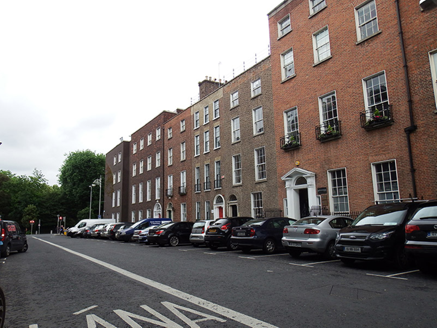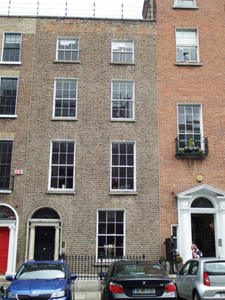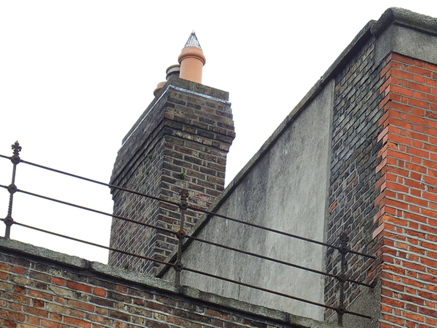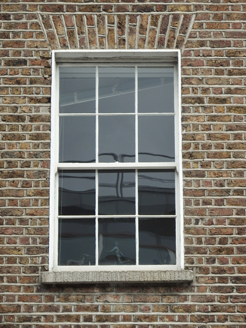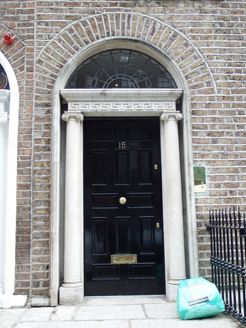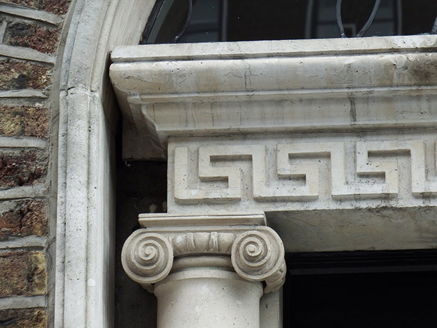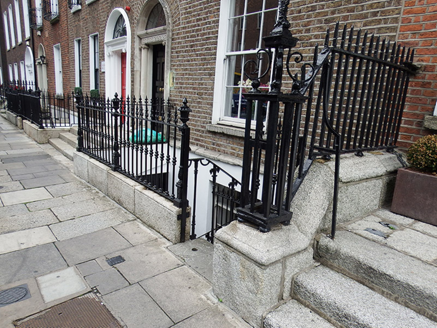Survey Data
Reg No
50100298
Rating
Regional
Categories of Special Interest
Architectural, Artistic
Original Use
House
In Use As
Office
Date
1770 - 1790
Coordinates
316291, 233356
Date Recorded
26/07/2016
Date Updated
--/--/--
Description
Attached two-bay four-storey former house over basement, built c. 1780. Now in use as offices. Pitched roof to front, behind rebuilt brick parapet having granite coping with decorative cast-iron handrail, and with concealed rainwater goods; flat roof to rear. Flemish bond buff brick walling over granite plinth course, with painted rendered walling to basement; rendered to rear. Square-headed window openings, diminishing in height to upper floors, having brick voussoirs, granite sills and painted rendered reveals. Replacement timber sliding sash windows, six-over-six pane to ground, first and second floors with convex horns, three-over-three pane to top floor and three-over-six pane to basement with iron grilles; apparently timber sash windows to rear, including round-headed stairs windows to east bay. Round-headed door opening with stuccoed doorcase comprising moulded reveals, entablature with keyed frieze over freestanding Ionic columns, leaded cobweb fanlight and replacement twelve-panel timber door with recent brass furniture. Shared granite entrance platform with three steps to street. Basement area enclosed by spear-headed cast-iron railings with decorative corner posts over granite plinth. Recent door to basement area, accessed by concrete steps with decorative iron balustrade. Continuous two-storey structures of slightly varying height to rear of plot at east end.
Appraisal
A modest late eighteenth-century Georgian house, displaying well-balanced proportions and graded fenestration typical of the period. The relatively plain façade is enriched by a good neo-Classical doorcase and ironwork setting features. In conjunction with Ely Place, Hume Street forms a T-plan arrangement of former residential streets, laid out in 1768 by the surgeon and property developer Gustavus Hume. Variations in scale, detailing and parapet height across this northern section of the street are indicative of the speculative and piecemeal nature of its construction. Despite some replacement fabric insertions, the overall character of No. 15 is largely retained, contributing to the significant eighteenth-century character of Hume Street, which is largely well-preserved on this northern section, and to the wider architectural heritage of south Dublin.
